One of the most beautiful and intriguing birds out there is the peacock. While many know this extraordinary bird because of its long, colorful, dress-like feathers, they are home to more intriguing attributes. In fact, Peacocks are one of the most diverse species of birds out there on our beloved planet! These birds range in both color and size and there are 3 subspecies. Each is incredibly unique in its own way. Let’s learn so more incredible facts about these stunning creatures.
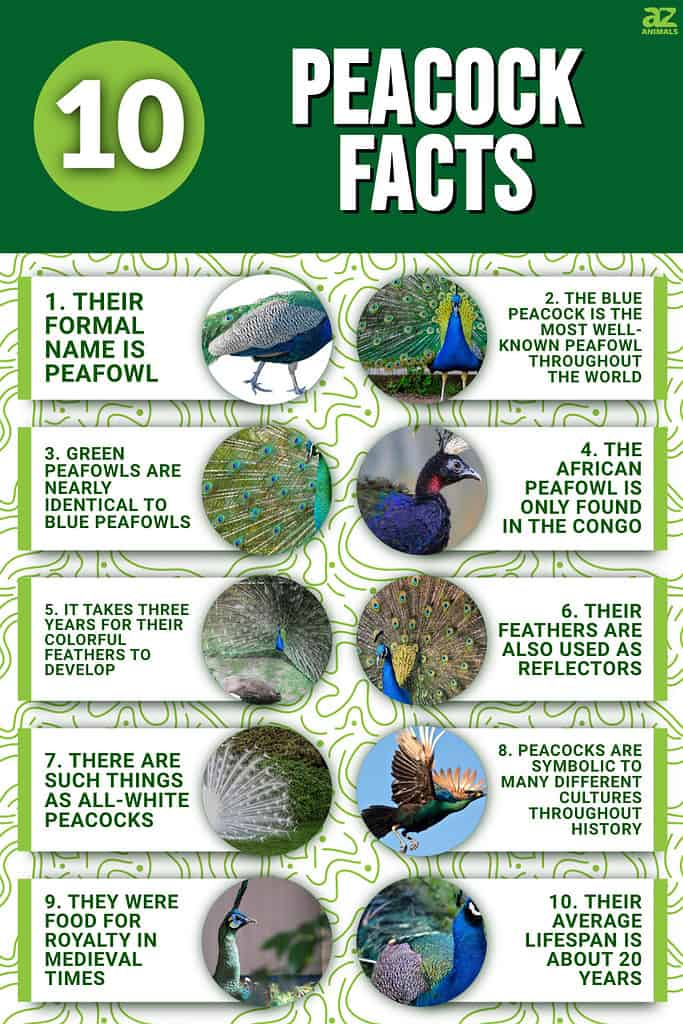
1. Their Formal Name Is Peafowl
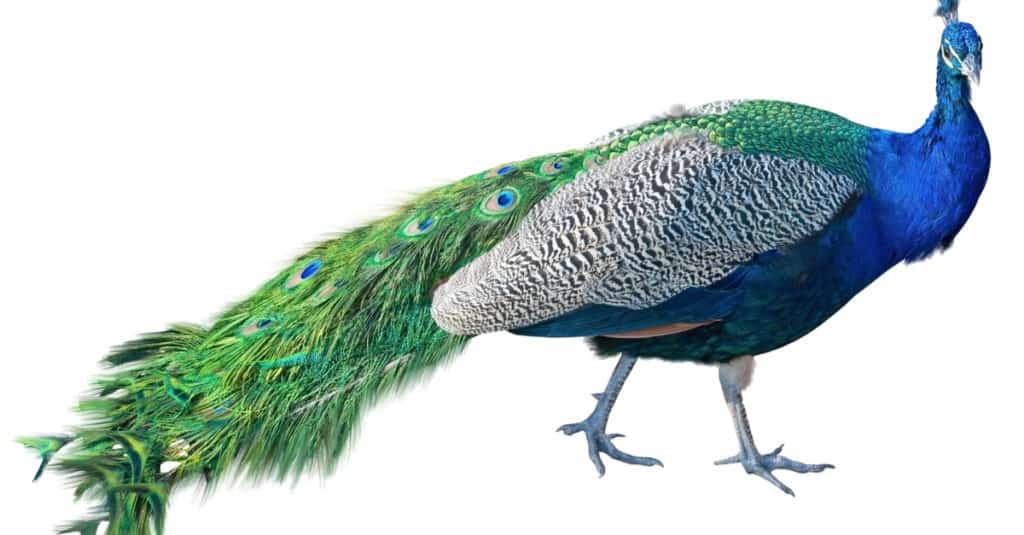
Peacocks are known for their breathtaking plumage, but less known is that their formal name is peafowl.
©a_v_d/Shutterstock.com
While the most commonly heard name for these big, feathered birds is peacock, their formal name is peafowl. Peafowl means a large, crested pheasant that is native to Asia, however, some now live in the Congo. In fact, only males of this species are referred to as peacocks. Females are called peahens while baby peafowls are called peachicks. When peafowls are in a group, it is often referred to as a muster or a bevy. Over time, the peacock became the comfortable phrase for these large terrestrial birds. However, it’s just a classification for males, even though they typically have longer and more extravagant feathers than females.
2. The Blue Peacock Is The Most Well-Known Peafowl Throughout The World
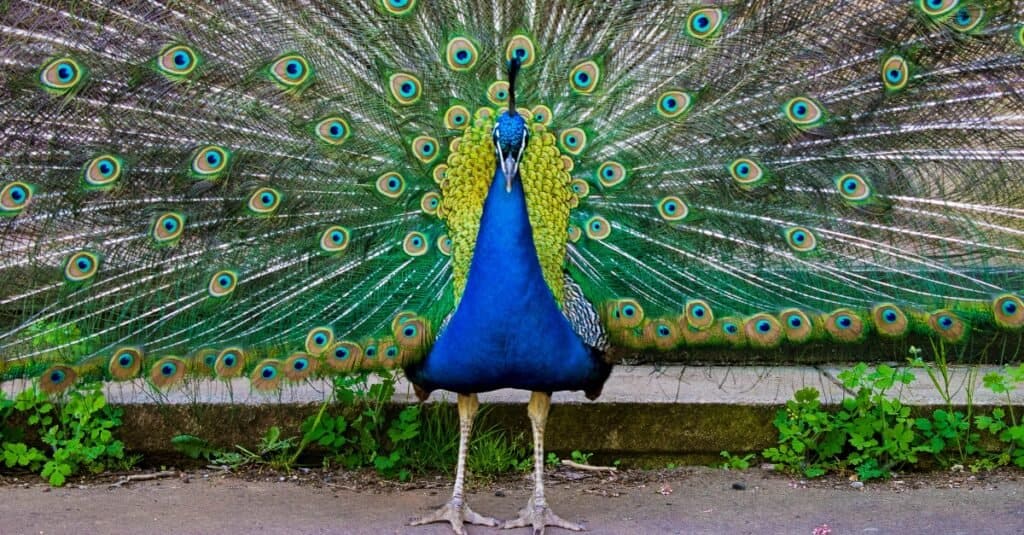
The gorgeous peacock is one of the largest flying birds known to man.
©iStock.com/Anna_Brothankova
When people often think of peacocks, the large blue bird with extravagant green and blue feathers is what often comes to mind first. It is referred to as the Indian peacock because it inhabits both India and Sri Lanka. It has a solid and stunning blue chest and large feathers that can reach a total of 5 feet across when expanded. These are one of the largest flying birds known to man and are also quite dazzling. When their feathers are expanded, they display a bright show of tan feathers with green circles, usually dotted with bright blue centers. Although these are the more dominant colors of the species, they will often change due to the reflection of light. Females of this species differ, their colors are not nearly as bright and are often more dull in comparison. This makes it extremely easy to tell them apart.
3. Green Peafowls Are Nearly Identical To Blue Peafowls
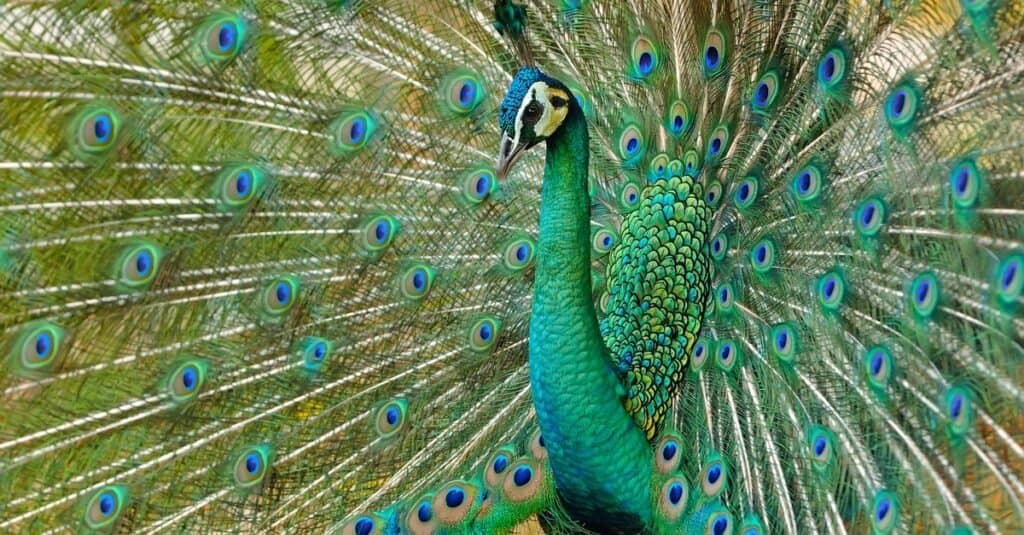
The colorful green peafowl is native to Indonesia and other parts of Southeast Asia.
©iStock.com/panda3800
Green peafowls are found in Indonesia and other parts of Southeast Asia. They are very closely related to the blue peafowls and often look the same. However, their chests are not blue, but rather green instead! They have a small, blue head and display many shades of vibrant green when their wings are fully expanded. These birds are usually a bit bigger than the blue peafowls and often have longer legs. When identifying a green peafowl without their wings expanded, it is easy to tell them apart. This is because their feathers usually extended behind them almost like the train of a dress. These birds typically offer a bit more color than their subspecies, also displaying yellow in both their faces and their wings.
4. The African Peafowl is Only Found in The Congo
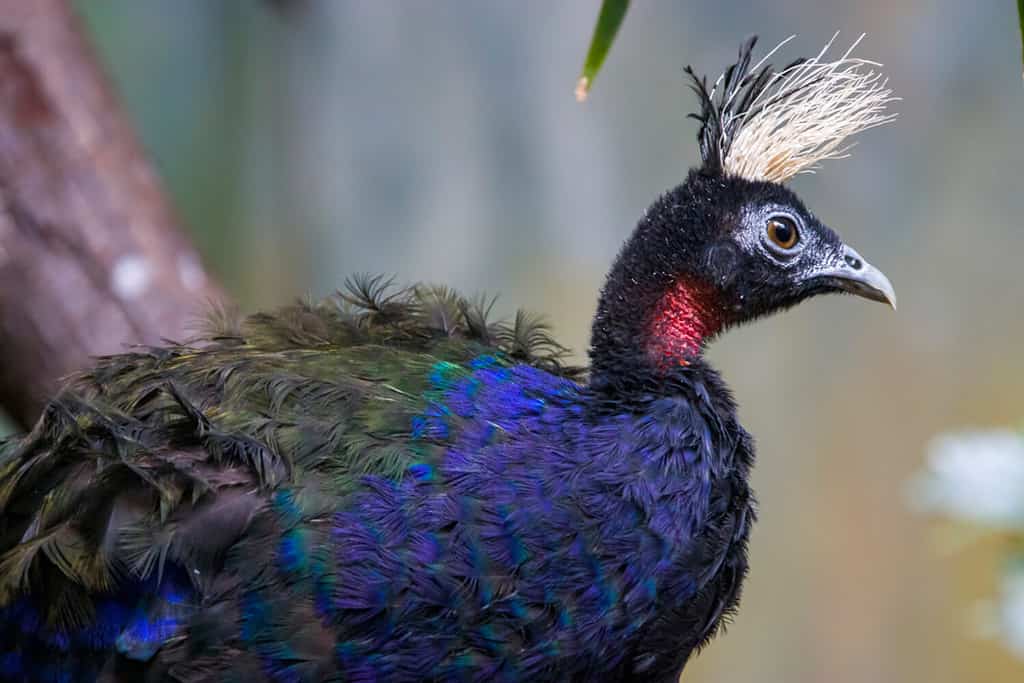
The African peafowl lives in the rainforests of the Congo.
©Danny Ye/Shutterstock.com
While spotted less than other species, the African peafowl is equally as beautiful as the others. This species is strictly native to the Congo. It inhabits the rainforests of the Congo and was declared the Congo’s national bird many years ago after it was discovered in 1936. However, the search was long before this species was ever found. In 1913, a single feather of one of these pheasants was found and this began a 23-year-long excursion to find this beautiful creature. These birds are much darker in comparison to other species, however, they do display very vibrant shades of blue. When their wings are expanded, they often resemble a colorful small bush when walking through the rainforest.
5. It Takes Three Years For Their Colorful Feathers to Develop
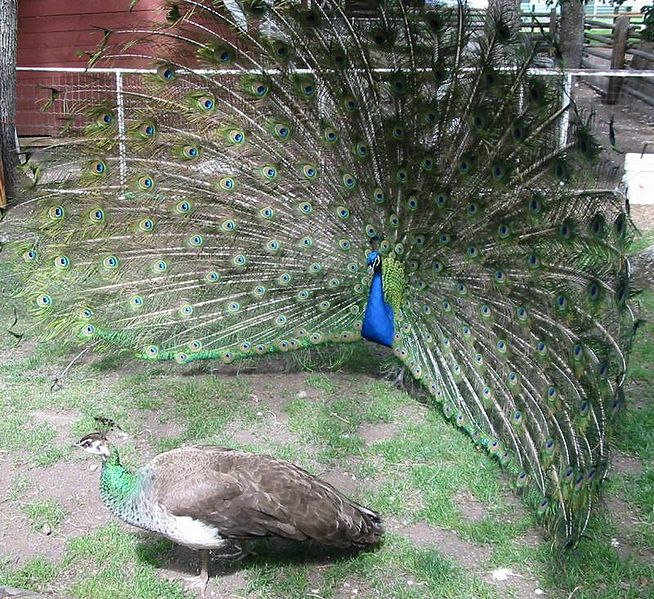
The Peacock’s colorful feathers that help it find a mate take time to develop, reaching brightness with sexual maturity.
©Darkros – Public Domain
When peafowls are young, they display less color than adults. This is because their colorful feathers take quite a bit of time to develop. In fact, it takes nearly three years for a peacock to display such vibrant colors within its feathers. This is because they come about when they’ve reached sexual maturity, as their feathers often aid in finding a mate. Pea “hens” have often been said to be quite fussy when choosing a mate, so the improved display for the colorful male will often aid with this struggle. Once mating season is over, peacocks will often shed their train and grow back in a year. This is just in time for the next mating season!
6. Their Feathers Are Also Used As Reflectors
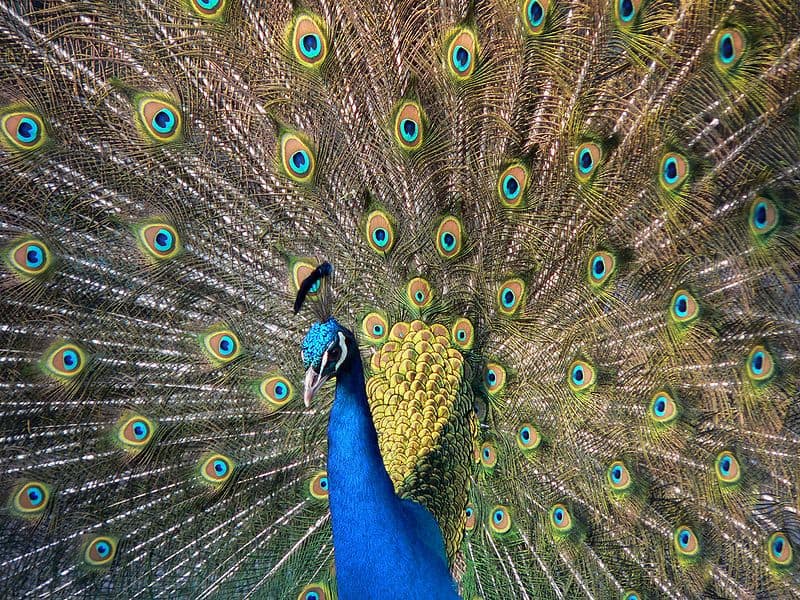
Peacock feathers can act as reflectors in addition to thwarting predators and attracting mates.
It is commonly known that peacocks often use their colorful feathers for mating. However, they are also used for reflecting light. When their feathers grow each year, pigment particles are embedded into them. This allows them to both absorb light and reflect light. However, the colors of these feathers are not solely due to pigment. Rather, it is a combination of both pigment and photonic crystals! This combination allows for a very colorful display once the wings are expanded fully, creating patterns on the feathers themselves. When the feathers are displayed they appear in the form of many pairs of eyes, which helps with thwarting nearby predators.
7. There Are Such Things as All-White Peacocks
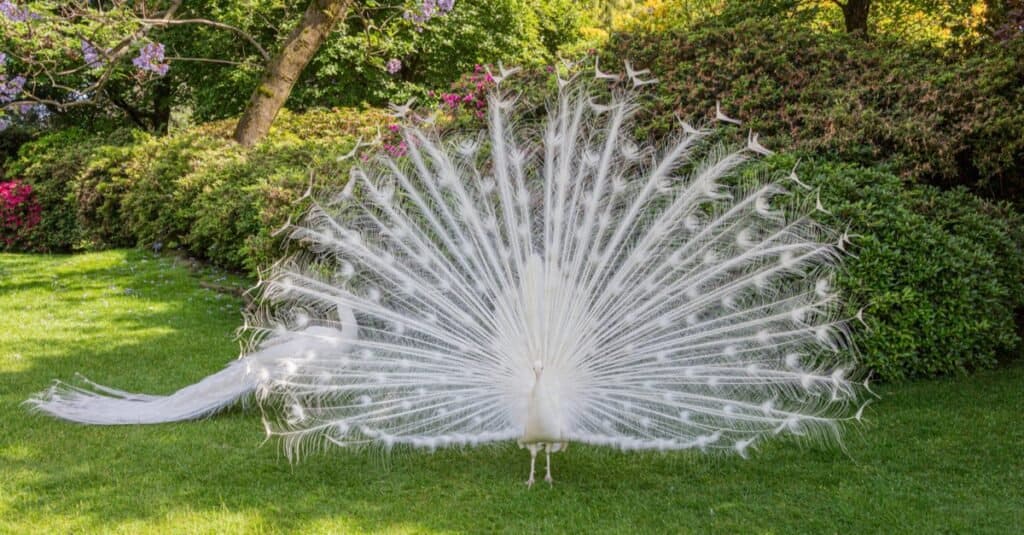
A white peacock shows off and displays his feathers in full.
©Michelle Silke/Shutterstock.com
One of the rarest forms of peacock is the white peacock. While these birds are not albino, they are technically declared as a genetic variant of the blue peacock. This genetic mutation is called Leucism, a variety of conditions that causes pigment loss in animals. When white peacocks are born, they are often yellow and will grow to become all-white. This includes both their crests and their feathers. While they are mostly kept in captivity, these rare forms of white peacocks can also be found in the wild in India.
8. Peacocks Are Symbolic To Many Different Cultures Throughout History
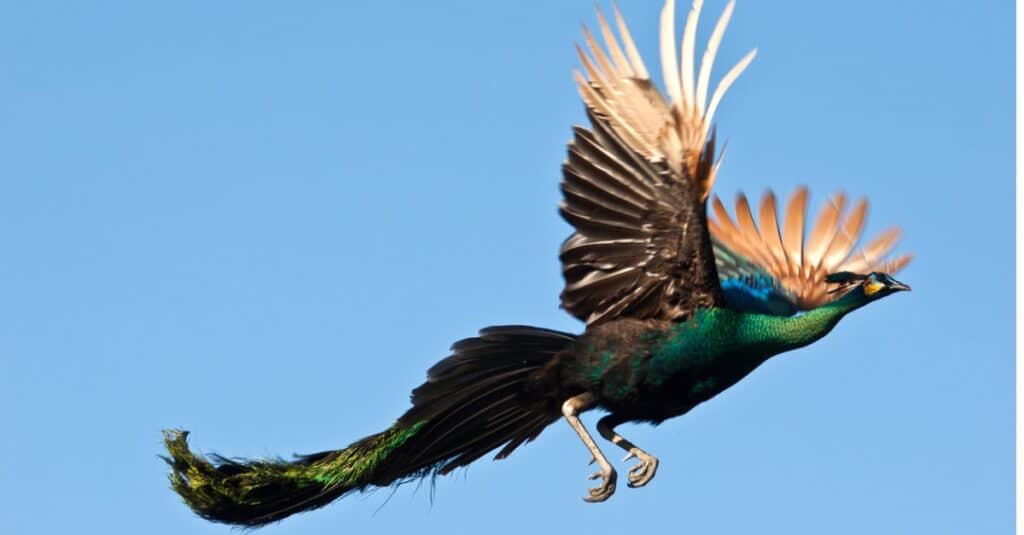
Peacocks can only fly
for seconds at a time.
©iStock.com/charti1
In many different cultures, the peacock and its amazing feathers have been declared symbolic. Although they are the national bird of India and the Congo, they have also been said to be a symbol of immortality in Greek mythology. Not only that but in Jewish culture, the golden peacock is said to be used as a symbol of creativity. In Persia, they were allied to the Tree of Life, and in early Christian mosaics the paintings of the eye-like feathers were said to be a symbol of the all-seeing God.
9. They Were Food For Royalty in Medieval Times
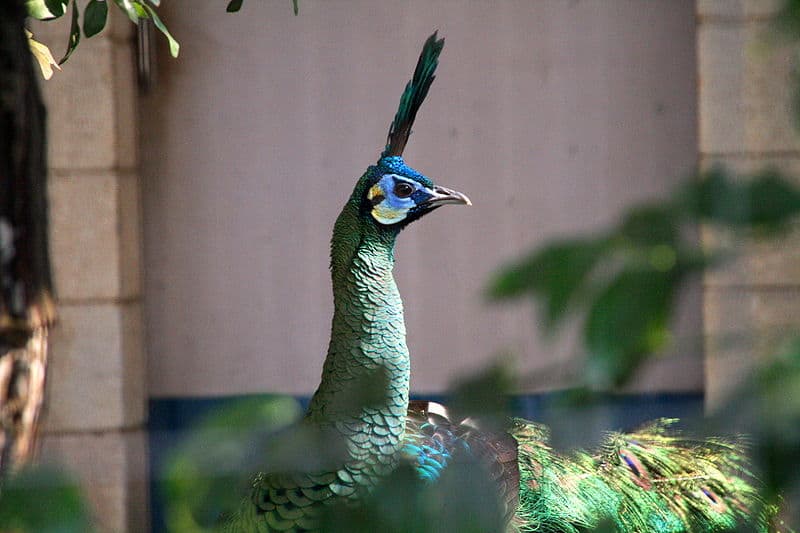
Peacocks were often eaten by royalty in medieval times.
©Frankyboy5 – Public Domain
Many years ago, these birds were seen as a form of delicacy for upper-class people. They were often served on tables to display the riches of the wealthiest people during medieval times. They would remove the feathers so that the bird could be cooked. However, when displayed on the tables later for a feast, they would often reattach their skin for a fascinating display. It is said that the taste was not close to chicken or turkey, but rather tough and unflavored. It was actually not well-liked amongst most wealthy folk.
10. Their Average Lifespan Is About 20 Years

Peacocks live up to 25 years in the wild!
©iStock.com/Marina_Poushkina
While some species of peacock can live up to 25 years in the wild, the common lifespan of a wild peacock is roughly 20 years. The average lifespan of the Indian peacock can range from 10-20 years in the wild. However, some that are held in captivity can often live up to 50 years. If they have a better-suited environment that provides better access to food, they will often live longer in the wild. However, sometimes their feathers can weigh a lot which makes it harder for them to escape from incoming predators.
The photo featured at the top of this post is © Anna Kucherova/Shutterstock.com
Thank you for reading! Have some feedback for us? Contact the AZ Animals editorial team.







